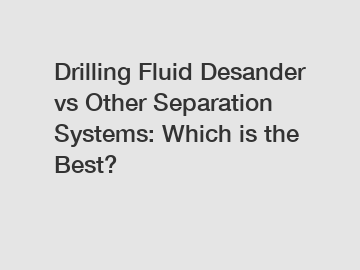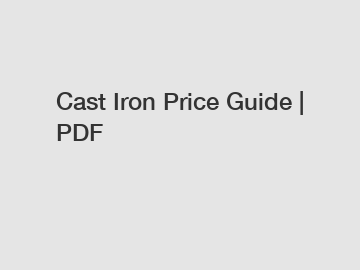How to Select the Best Rotary Shaft Seal
Mar. 01, 2024

SBT is a professional Rotary Shaft Seals supplier and has an in-depth brief on how to Select the Best Rotary Shaft Seal. In this article, we will help you choose the best Rotary Shaft Seal.
When it comes to maintaining a high-functioning rotary shaft, you need to select the appropriate lip seal, also known as radial oil seals.
The shaft seal provides a barrier between a rotating shaft and its housing, preventing the escape of lubricants and the ingress of contaminants. The rotary seal’s outside surface is fixed to the housing, while the seal’s inner lip presses against the rotating shaft.
Common applications for shaft seals include motors, gear boxes, pumps and axles. They’re also increasingly used for food and chemical processing, as well in pressurized gas applications.
Factors to Consider
The material the seal is made of,
the hardness of the shaft’s surface, and
the roughness of the shaft’s surface.
Here’s our guide on how to achieve optimum performance and longevity for your seals and shafts, ultimately minimizing the risk of seal failure.
What Material Is Ideal for Rotary Seals?
Polytetrafluoroethylene (PTFE), commonly known as Teflon, is the optimal material for rotary shaft lip seals. PTFE is preferred due to its exceptional qualities such as extremely low friction and resistance to wear and tear.
One of the significant advantages of PTFE is its excellent performance at high operating temperatures, requiring minimal lubrication. Additionally, it has compatibility with a wide range of chemicals, making it a versatile choice for various applications.
Rotary shaft lip seals made of PTFE are known for their durability and low coefficient of friction. This characteristic enables them to smoothly glide over the highest points of the mating surface, such as the rotary shaft, while effectively resisting abrasion. Furthermore, they can accomplish this without the need for lubrication.
Which Properties of Metal Rotary Shafts Impact Sealing Performance the Most?
When designing a lip seal for a metal rotary shaft, the two key characteristics that significantly affect sealing performance are the roughness and hardness of the shaft. Let's focus on roughness first.
What Does Roughness Mean in the Context of a Rotary Shaft?
Roughness in relation to a rotary shaft refers to the unevenness or irregularity of the shaft's surface. To measure shaft roughness, we analyze the disparity between the highest and lowest points on the shaft's surface, which is known as machined tolerance.
To achieve optimal seal performance and longevity, it is crucial to minimize the roughness of the shaft's surface through appropriate finishing techniques. A well-finished surface with the correct machined tolerance will ensure excellent sealing performance.
Recommended article:How to Check Valve Stem Seals
How long does Tractor Oil Seal last?
What's the difference between an oil seal and a grease seal?
Oil Seal Kit: Ensuring Optimal Machinery Performance
Best Management Practices for the Oil and Gas Industry
What are the best YMC-600 drilling solutions?
Everything You Need To Know To Find The Best f-1000 triplex mud pumps, api-7k triplex mud pumps
A rotary shaft with high surface roughness can create paths for leakage through its low points. Moreover, the abrasiveness of the surface can accelerate seal wear, leading to premature failure.
In general, a smoother surface on the rotary shaft results in better seal performance. However, excessively smooth surfaces beyond the specified requirements can actually reduce the effectiveness of the seal. This is because extremely smooth surfaces prevent the flow of a lubricating fluid film between the seal and the mating surface.
The presence of this lubricating film is vital as it extends the seal's lifespan by providing lubrication. Without it, the seal will wear out more quickly. Essentially, if the surface of your rotary shaft is excessively smooth, the seal may initially perform exceptionally well but will eventually lose its effectiveness.
What Does Rotary Shaft Hardness Mean?
The hardness of a rotary shaft is determined by the depth of penetration of an indenter into its surface when subjected to high pressure. The Rockwell scale is commonly used to measure this penetration depth in relation to a reference pressure.
In order to protect the shaft, it is important for a seal to be softer than the rotary shaft. This ensures that the seal wears out instead of the shaft. Therefore, a harder shaft provides more options for seal materials.
For metal rotary shafts, a harder surface is preferable. Increased hardness allows for the use of highly reinforced seal materials, which enhances the lifespan of both the lip seal and the shaft itself.
On the other hand, a softer metal shaft is vulnerable to abrasion and erosion when using the best seal lip materials, such as PTFE. When working with a soft rotary shaft, it is necessary to use a softer seal, although this means a shorter seal life.
However, there is one advantage to maintaining a rotary shaft surface hardness below 45 on the Rockwell C scale. During the initial "bedding in" period, most seals will actually polish the shaft surface.
After this period, the wear on the rotary shaft will depend on factors such as the PTFE material of the seal, the shaft's surface finish, and the Pressure*Velocity (PV) rating of the application.
When the hardness exceeds 45 Rockwell C, the initial manufactured surface finish becomes crucial for seal life. This is because there is limited polishing during the "bedding in" period. In cases of high hardness, any surface roughness will cause wear on the seal.
Hence, the roughness and hardness of the rotary shaft surface are interrelated properties in lip seal design. As hardness increases, roughness must decrease. Conversely, a less hard surface allows for slightly more roughness.
What is the Suggested Hardness for a Rotary Shaft?
The ideal hardness for a metal rotary shaft depends on shaft speed and environmental pressure.
At the low end of the spectrum, in rotary shaft speeds up to 150 sfpm (0.76 m/s), with 0 psi, hardness should be at least 35 Rc (with high lubrication) or 44 (if no lubrication).
70+ Rc may be required for 1000 psi at the same speed (up to 150 sfpm).
60+ Rc may be required for 2500 sfpm at the same pressure (0 psi).
In typical engineering practice, the hardness used is normally a compromise between the expense of harder finish metals and seal life. As with any design task, the challenge is finding a solution that meets not only the technical requirements, but also falls within the logistical (i.e., budgetary) limits.
Achieving the Optimum Match Between Rotary Shaft and Lip Seal
Because of the wide range of PTFE fillers and material specifications, it’s not always easy to find exactly the right rotary seal for your shaft to ensure optimum seal effectiveness and longevity. If you can’t find an existing shaft seal that meets your needs, you may need to design a custom seal. That happens to be exactly what our seal engineers specialize in here at Eclipse Engineering. We craft many types of seals for rotary shaft applications. including cased lip seals, O-ring OD lip seals, and MicroLip seals.
Workover Rig vs Drilling Rig: Key Differences Explained.
Key Questions to Ask When Ordering Heavy Duty Chemical Centrifugal Pump" - A Comprehensive Guide
How do I choose a disc spring?
Forklift Truck Accessories and Attachments
5 Reasons Why Your Business Needs belville washer?
How to troubleshoot common fluid end module issues
Oil Sucking Machine: Manual vs. Automatic - A Comparison
330
0
0
Previous: How long does Tractor Oil Seal last?
Related Articles











Comments
All Comments (0)